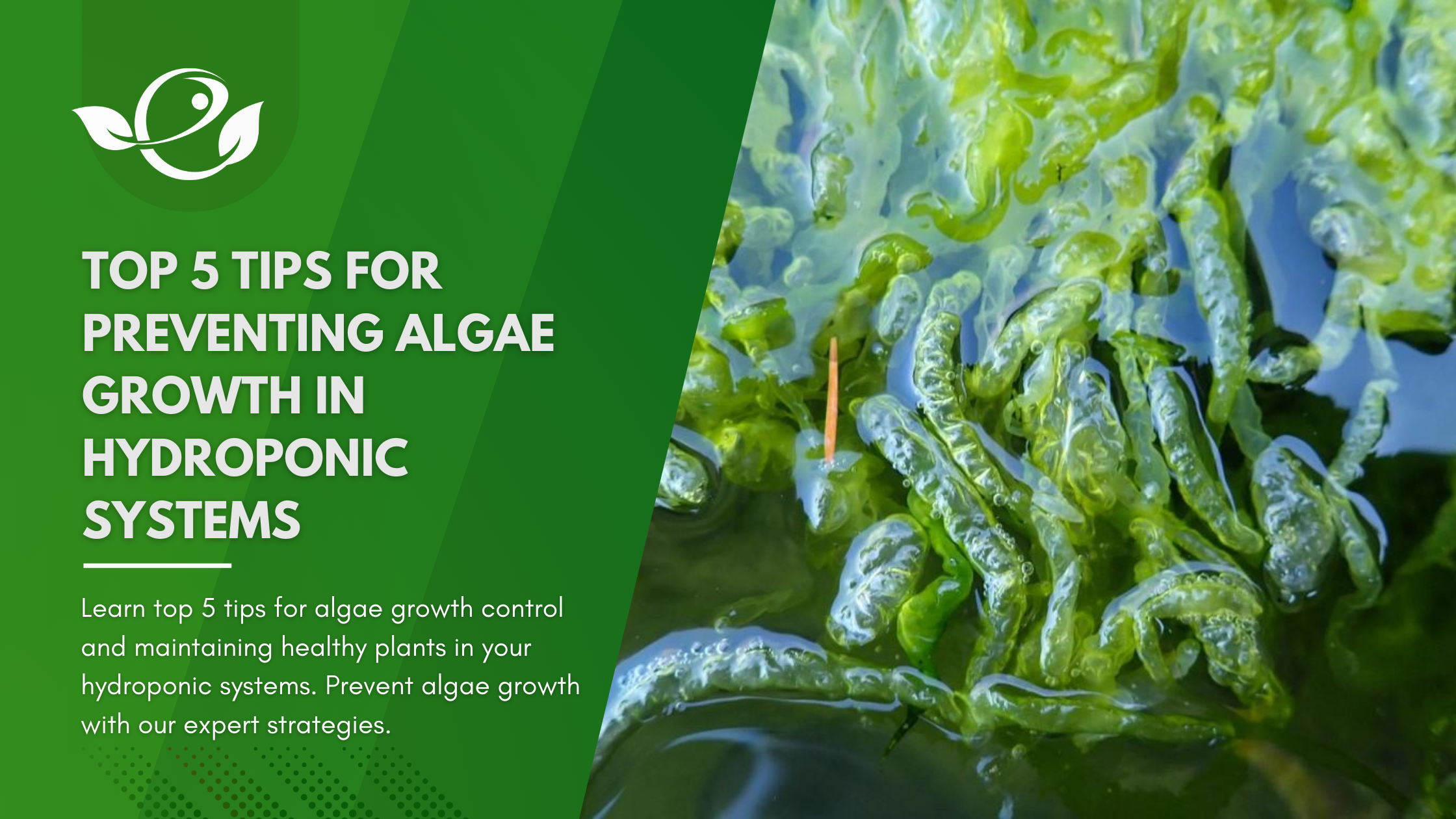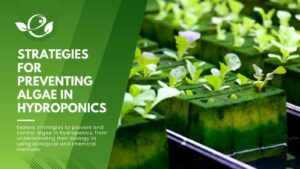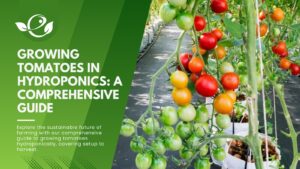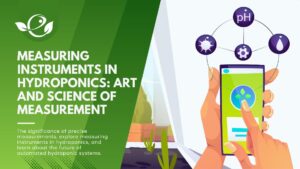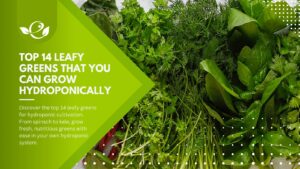Table of Contents
1. Introduction
Hydroponic systems offer an efficient and controlled environment for cultivating plants without soil, but they also provide ideal conditions for algae growth. Algae, a diverse group of photosynthetic organisms, can quickly colonize hydroponic reservoirs, grow media, and irrigation systems, competing with plants for nutrients, light, and space. Controlling and preventing algae infestations is essential for maximizing crop yields and maintaining system integrity.
Hydroponic systems represent an innovative approach to agriculture, allowing plants to thrive in a soilless environment where their roots are directly exposed to nutrient-rich water solutions. While this method offers numerous benefits, including increased growth rates and water efficiency, it also presents challenges, one of the most common being algae infestations.
In this comprehensive guide, we will delve into the intricacies of algae growth in hydroponic systems, identify key factors contributing to its proliferation, and provide actionable tips and preventative measures to keep your hydroponic setup algae-free.
2. Understanding Algae in Hydroponic Systems
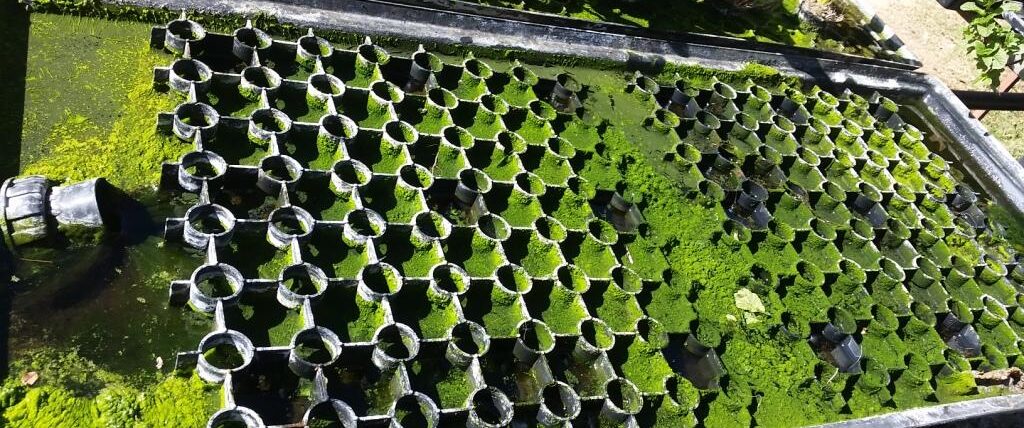
A. What is algae?
Algae encompass a wide range of photosynthetic organisms, including green algae, blue-green algae (cyanobacteria), and diatoms. These microscopic organisms thrive in aquatic environments and are capable of rapid growth under favourable conditions.
B. How algae proliferate in hydroponic environments
Algae reproduce through spores, fragmentation, or cell division, taking advantage of nutrients, light, and moisture present in hydroponic systems. Excessive nutrient levels, high light intensity, and stagnant water can exacerbate algae growth, leading to unsightly blooms and potential harm to plants.
C. Impact of algae on plant growth and system health
Algae compete with plants for essential nutrients, space, and light, inhibiting their growth and development. Moreover, algae buildup can clog irrigation lines, filters, and pumps, compromising the efficiency and longevity of hydroponic systems. Addressing algae infestations promptly is crucial to mitigate these adverse effects.
3. Identifying Types of Algae in Hydroponic Systems
A. Common types of algae found in hydroponics
- Green algae (Chlorophyta): This type of algae is typically green in color and may form slimy mats or suspended particles.
- Blue-green algae (Cyanobacteria): Often characterized by a blue-green hue, these algae may form surface scum or filamentous colonies.
- Diatoms (Bacillariophyta): Diatoms are known for their intricate silica cell walls and may appear brown or golden in colour.

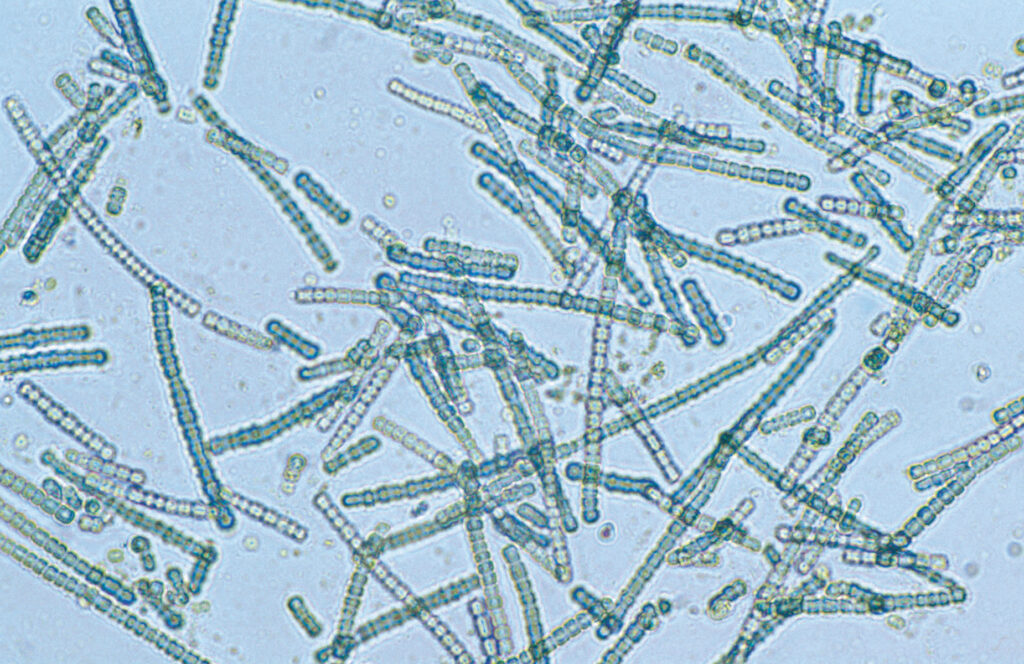

B. Characteristics and identifying features of each type
- Green algae: Commonly found in nutrient-rich environments, green algae thrive in the presence of light and organic matter.
- Blue-green algae: These organisms can produce toxins harmful to both plants and animals and are often associated with nutrient pollution.
- Diatoms: Diatoms play a vital role in aquatic ecosystems and are known for their unique cell structure, which can be observed under a microscope.
C. Potential risks associated with different types of algae
- Green algae: Nutrient competition and reduced dissolved oxygen levels.
- Blue-green algae: Toxin production, oxygen depletion, and foul odours.
- Diatoms: Clogging of filters and irrigation equipment.
4. Factors Contributing to Algae Growth
A. Light exposure and intensity
Excessive light exposure, particularly in the blue and red spectrum, promotes algae growth. Implementing light-blocking materials or shading can help mitigate this effect.
B. Nutrient levels and imbalance
High nutrient levels, especially nitrogen and phosphorus, fuel algae proliferation. Maintaining proper nutrient balance and avoiding over-fertilization is essential for algae control.
C. Temperature and pH fluctuations
Warm temperatures and fluctuations in pH can favour algae growth. Monitoring and regulating temperature and pH levels within optimal ranges are critical for preventing algae infestations.
D. Oxygen levels and circulation
Poor oxygenation and stagnant water create favourable conditions for algae growth. Installing air pumps or aerators and enhancing water circulation can disrupt algae growth and improve system oxygenation.
E. Presence of organic matter and debris
The accumulation of organic matter and debris provides nutrients for algae growth. Regular maintenance, including debris removal and system cleaning, is essential for preventing algae buildup.
5. 5 Tips for Preventing Algae Growth
A. Light management techniques
- Using light-blocking materials such as opaque reservoir covers or light shields.
- Implementing light schedules to limit exposure during algae’s peak growth periods.
B. Nutrient management strategies
- Monitoring and adjusting nutrient levels to maintain optimal balance.
- Choosing algae-resistant nutrient solutions formulated specifically for hydroponic systems.
C. Temperature and pH control methods
- Maintaining stable temperature conditions within the recommended range.
- Regularly monitoring and adjusting pH levels to prevent fluctuations that favor algae growth.
D. Oxygenation and circulation improvements
- Installing air pumps or aerators to increase dissolved oxygen levels.
- Enhancing water circulation through the use of pumps or circulation fans to discourage algae growth.
E. Regular maintenance and cleaning routines
- Removing algae manually using brushes or scrapers.
- Cleaning and sterilizing equipment, including reservoirs, grow trays, and irrigation lines, on a regular basis.
6. Preventative Measures for Algae Control
A. Quarantine and inspection of new plants or supplies
Before introducing new plants or equipment into your hydroponic system, quarantine them and inspect for any signs of algae or contamination.
B. Implementing preventive treatments
- Utilizing algaecides or biocides specifically formulated for hydroponic use.
- Introducing beneficial microbes or bacteria that can outcompete algae for nutrients and space.
C. Establishing a strict hygiene protocol
- Sanitizing tools, equipment, and growing surfaces regularly to prevent algae introduction.
- Minimizing the introduction of contaminants by practising proper hygiene and handling procedures.
7. Case Studies or Examples
Explore real-life scenarios where hydroponic growers faced algae infestations, detailing the strategies they employed to combat algae growth and restore system health.
8. Conclusion
Algae infestations pose a significant challenge to hydroponic growers, but with proper understanding and proactive management, they can be effectively controlled and prevented. By implementing the tips and strategies outlined in this guide, you can safeguard your hydroponic system against algae alarms and ensure optimal plant growth and productivity.
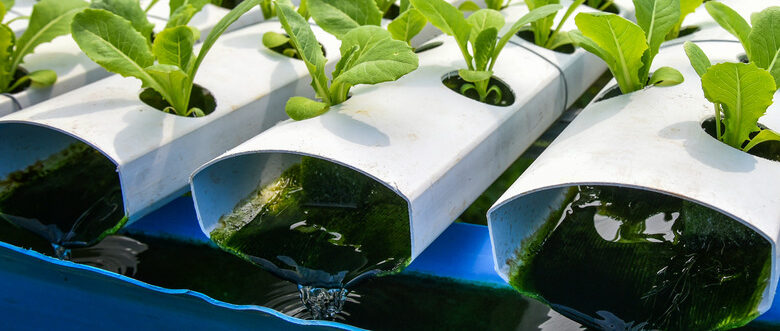
9. Frequently Asked Questions (FAQs)
What are the common signs of algae infestation in hydroponic systems?
Common signs include green or brown discolouration of water, slimy or stringy algae growth on surfaces, foul odours emanating from the reservoir, and reduced plant health or growth due to nutrient competition.
How can I prevent algae growth in my hydroponic systems?
Prevent algae growth by implementing light management techniques, maintaining proper nutrient balance, controlling temperature and pH levels, ensuring adequate oxygenation and circulation, and practising regular maintenance and cleaning routines.
Can algae be beneficial in hydroponic systems?
While some types of algae can contribute to nutrient cycling and provide oxygen, excessive algae growth can outcompete plants for resources and compromise system health. Thus, it’s essential to control algae growth to maintain a balanced ecosystem in hydroponic setups.
Is it safe to use algaecides or biocides in hydroponic systems?
Yes, algaecides or biocides specifically formulated for hydroponic use can be effective in controlling algae growth. However, it’s crucial to follow dosage instructions carefully and avoid any products that may harm plants or contaminate the water.
How often should I clean and sterilize my hydroponic systems to prevent algae?
It’s recommended to clean and sterilize your hydroponic system regularly, ideally every 1-2 weeks or as needed based on algae growth and system maintenance requirements.
Can I use natural methods to control algae in my hydroponic systems?
Yes, natural methods such as introducing beneficial microbes or bacteria, implementing proper hygiene protocols, and using light-blocking materials can help control algae growth without the need for chemical treatments.
Will algae growth harm my plants in hydroponic systems?
Yes, excessive algae growth can harm plants by competing for nutrients, blocking light, and reducing oxygen levels in the water. It’s essential to address algae infestations promptly to prevent negative impacts on plant health and growth.
What should I do if I notice algae growth in my hydroponic systems?
If you notice algae growth, take immediate action to control it by implementing appropriate measures such as adjusting light exposure, nutrient levels, and circulation, as well as conducting thorough cleaning and maintenance of your system.
